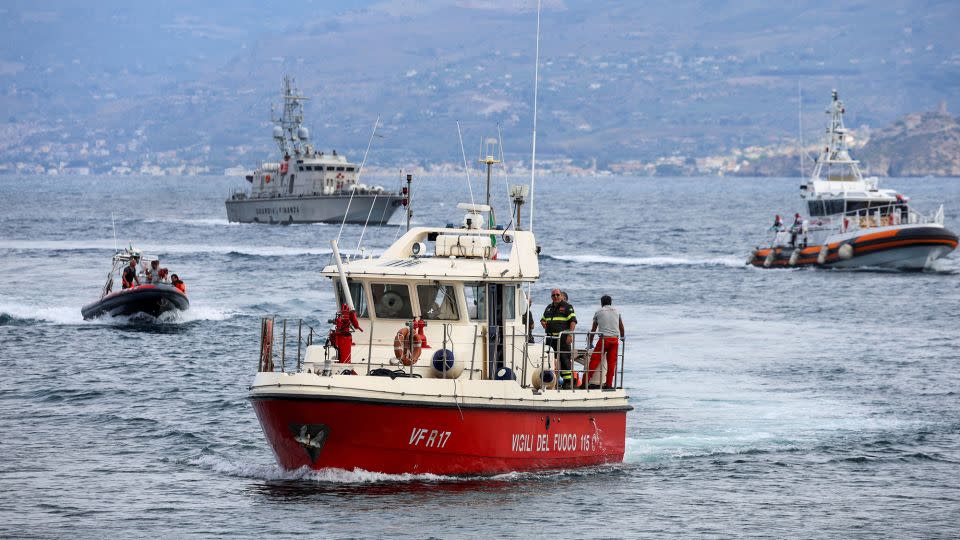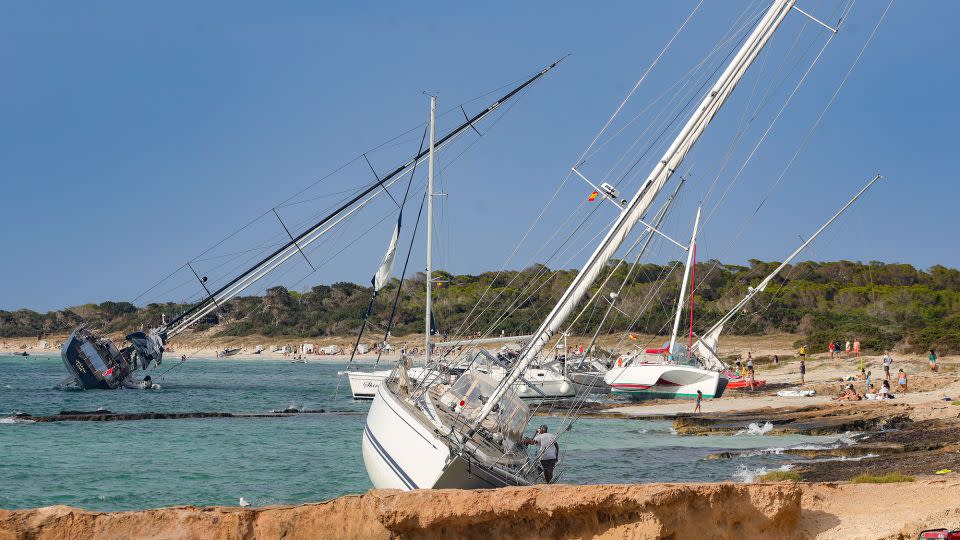The storm that sank the luxury yacht Bayesian off the coast of Sicily was sudden, violent and deadly. Scientists say it could be a warning of what’s to come as global warming causes more extreme weather in the Mediterranean.
The superyacht, carrying 22 people, sank near the port of Porticello in the early hours of Monday morning, killing at least five people. Rescue operations are still ongoing because of the difficulties in reaching the vessel, which lies on the seabed at a depth of about 165ft.
The incident shocked many. The Mediterranean, prized for its crystal clear, calm waters, is a prime summer destination for the very rich and their super yachts.
But these waters can still be dangerous, which is one reason why thousands of people die every year trying to cross them. Experts say this is becoming even more dangerous as human-caused climate change warms the sea, creating stronger and more intense storms.

The causes of the Bayesian sinking are still being investigated. “It was dark and there are no images available,” said Luca Mercalli, president of the Italian Meteorological Association.
But many believe the yacht was hit by a tornado — one of several types of hurricanes. The coastguard reported the yacht was hit by a tornado, and a tornado was also reported to the European Severe Weather Database. The storms that day led to at least two dozen reports of tornadoes across Italy.
Waterspouts are narrow, rotating columns of air that form over water and under thunderstorms, and they feed on heat and moisture.
“Most tornadoes are fairly weak, with a few seconds of strong, gusty winds before they move on or dissipate,” said Peter Inness, a meteorologist at the University of Reading. “But some can be much stronger.”
There isn’t much data on waterspouts because they often occur unobserved at sea, but there is evidence that ocean temperatures can affect them. A study by University of Barcelona scientists focused on Spain’s Balearic Islands found that waterspouts are more likely when the ocean is very warm.
But establishing a link between climate change and more frequent or intense cyclones is “a step too far right now,” Inness said. They require several different conditions, in addition to heat, such as winds and temperature differences between the air and the sea, to form.
But one thing is clear: climate change is causing more intense storms, some of which are fed by warm ocean water.
And the Mediterranean is very, very warm right now.
Mercalli said water temperatures around Sicily were around 30 degrees Celsius (30 degrees Fahrenheit). That’s 3 degrees Celsius (5.4 degrees Fahrenheit) warmer than average for this time of year — an “extreme” anomaly, he told CNN.
Scientists say ocean temperatures are affected by natural climate fluctuations such as El Niño, but human-induced global warming caused by the burning of fossil fuels is increasing this temperature even more.
When oceans are warm, they can inject more energy into the atmosphere. That can translate into strong winds or rapid upward movement of air in thunderstorms, Inness said. Warm air can also hold more moisture, so when storms do produce rain, it can be heavier and more concentrated.
Mercalli said that in Italy and around the world, violent thunderstorms that drop large amounts of rain, as well as strong winds from thunderstorms, have increased over the past few decades.
The storm that hit Sicily reached the Mediterranean from the west, where it was powered by higher ocean temperatures, said Justino Martínez, a researcher at the Institute of Marine Sciences in Spain.
Spain’s Balearic Islands have been particularly affected, with heavy rain over the past week flooding roads, forcing evacuations and flight cancellations and capsizing yachts moored on the popular island of Formentera.
The storm was gaining strength before it reached Italy, Martínez told CNN. In addition to the tornado, other powerful storms in Sicily brought heavy rain late Sunday, dumping more than 100 mm, or 4 inches, on Brolo in less than four hours.


The Mediterranean region is at the forefront of the climate crisis. Dubbed a climate change hotspot, it is warming around 20% faster than the global average. And the extreme weather the region is experiencing, from brutal rolling heatwaves to severe storms that cause catastrophic flooding, is taking its toll.
“Global warming – and particularly the warming of the Mediterranean – is very likely to lead to the intensification of a number of potentially dangerous weather systems in that region,” Inness said.
Italy, surrounded by the rapidly warming waters of the Mediterranean, is particularly affected. Last year, a powerful explosion hit a ship on Lake Maggiore in northern Italy, killing four people.
The country is also grappling with deadly “once-in-a-century” floods that killed at least 14 people in May last year, while Sicily hit a European heat record of 48.8 degrees Celsius (119.8 Fahrenheit) last August.
Outside Italy, last year’s Storm Daniel, fueled by unusually warm ocean waters, caused deaths in Greece, Turkey and Bulgaria, but the worst damage was in Libya.
Medicane, a rare, warm-water-powered hurricane-like cyclone in the Mediterranean, has killed thousands.
“Global warming is intensifying all extreme weather events,” Mercalli said, “and it is imposing huge costs on people and society.”
For more CNN news and bulletins, create an account at CNN.com